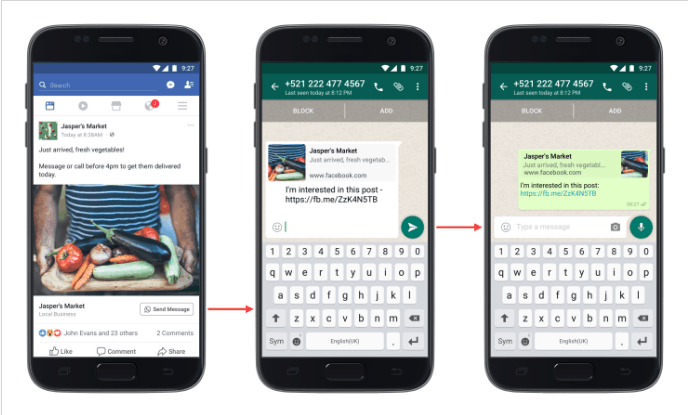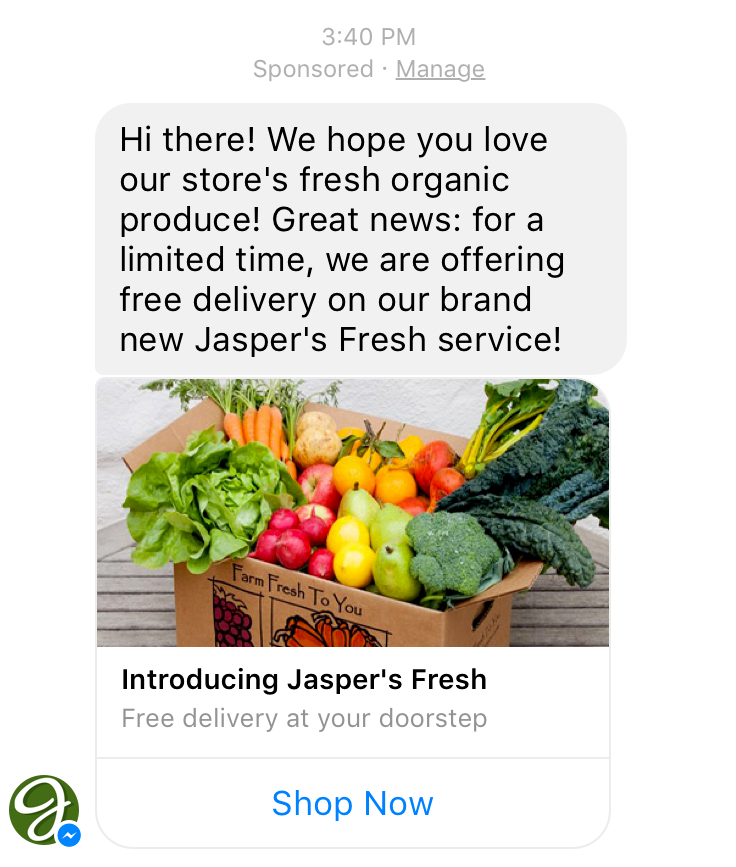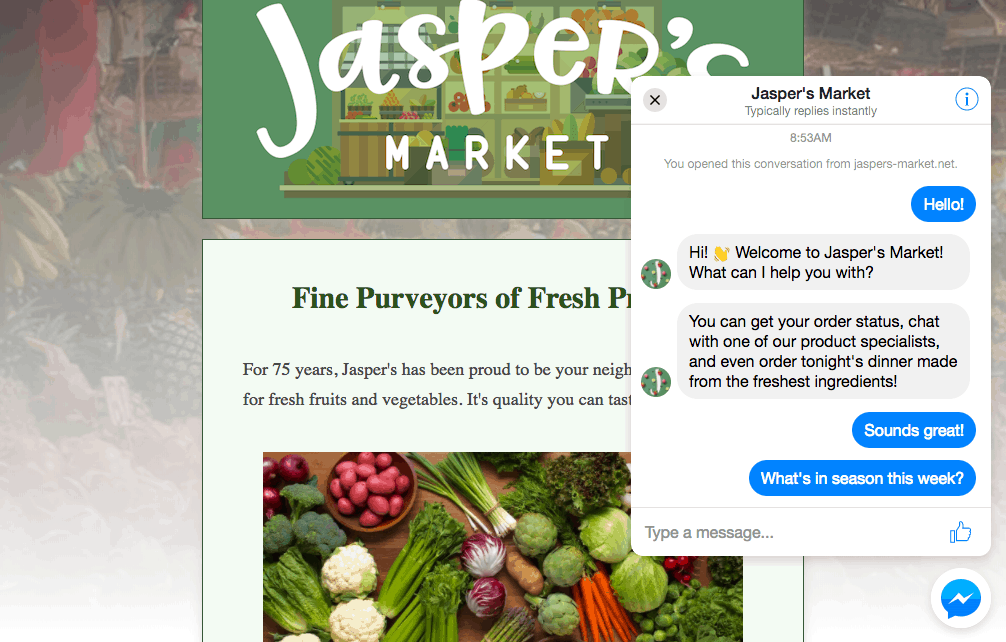
For schools hoping to boost recruitment, instant messaging apps have been one of the hottest channels over the past couple of years. These services offer an immediate, intimate space in which to engage one-on-one with interested prospects, providing the potential to build a strong relationship with them during the inquiry process.
The matter of which messaging app to use is, potentially, a difficult one, though most schools would do well to focus on the two main players: WhatsApp and Facebook Messenger. Both claim international user bases of approximately 1.3 billion accounts and both offer similar basic feature sets: text, voice, image, and video messaging; file sharing; and mobile network connectivity.
However, while they are undeniably similar, delving into the functionality and market positioning of both services reveals some interesting differences, suggesting one or the other might be best for particular needs.
Keep reading for a comparison of some of the pertinent qualities of WhatsApp and Facebook Messenger in regards to driving engagement for schools.
WhatsApp Offers Inroads Into Developing Markets for Schools
One of the great benefits of using WhatsApp to engage with prospective students stems not from its feature set, but rather from the demographics of users who rely on the platform for instant messaging.
WhatsApp enjoys popularity on every inhabited continent, but has enjoyed a particularly strong presence in developing nations. This includes some of the fastest-growing, and therefore some of the most important, economies in the world. For instance, according to a Statista report titled Selected emerging mobile markets with the highest WhatsApp penetration rate as of 4th quarter 2016, the WhatsApp penetration rate in Brazil is 53 percent. In India, it’s 28 percent.
Given that these countries have populations of 207.7 million and 1.3 billion, respectively, this translates to massive pools of users. Consider that these are just two examples of the many developing economies that rely on WhatsApp for communication, and there’s little surprise as to why the app’s user base has climbed to over 1 billion, or why so many schools are excited at the prospect of using WhatsApp for recruitment and engagement.

Facebook Messenger, though boasting a similar number of users to WhatsApp, has a presence that is mostly concentrated in developed economies like the United States, Canada, and Australia. While this doesn’t negate the potential value of pursuing Messenger users, today’s trend towards increased focus on recruiting from international markets does mean that, for many schools, WhatsApp has an important advantage. If your institution has a particular interest in recruiting international minds to join its ranks, this could be a sign that you should focus on investing in WhatsApp as a tool for engagement.
WhatsApp’s Simplicity Demands & Rewards Creativity
It is important to note that while WhatsApp and Facebook Messenger are both owned by Facebook, WhatsApp has been left relatively independent since its acquisition in 2014. As such, it currently lacks most of the advanced advertising capabilities that make Messenger such a compelling choice for engaging with students today, though there is speculation that identical or similar features will make their way to WhatsApp within the next couple of years.
This means the usefulness of WhatsApp for schools looking to increase engagement is, at present, very much dependent on how willing the school is to get hands-on and engage with each prospect who chooses to reach out to them through the app. However, one could argue that being made to take this approach has its advantages, as it requires that schools put an effort into building real connections on the platform.
One way your institution might want to use WhatsApp is as a tool for sending out personalized reminders for important events like open houses, enrollment deadlines and other important, time-sensitive happenings. Perhaps more fundamentally, WhatsApp can be put to great use for precisely what it was created for: as an application to allow two or more parties to have a live conversation. Using WhatsApp as a tool for handling inquiries allows it to thrive as an ideal solution for near-instantaneous communication, and makes it easy for you to address questions or concerns quickly. In keeping with this, ensuring that turnarounds are short for this kind of assistance can go a long way to encouraging greater engagement and trust in your institution.
Example: The University of Hohenheim offered counselling for prospective students via WhatsApp for a week last year. Promoting your WhatsApp account on your website can be a great way to encourage more prospective students to engage with your school on the app.

Whatever kinds of messages your school elects to send, since they will be arriving straight to the phone of the user, you can send them with fair confidence that your words are being received, seen, and considered. Just be sure to only send messages to individuals who initiate contact. Unsolicited instant messaging will likely be interpreted either as spam or as presumptuous and aggressive marketing tactics on the part of your school.
New Click-to-WhatsApp Ads Hold Great Promise
Only recently announced for worldwide release, Click-to-WhatsApp ads are the first big advertising move for WhatsApp, and don’t even take place within the WhatsApp platform. Nonetheless, this ad format is something that schools looking to leverage WhatsApp for greater engagement should be excited about.
“Click-to-WhatsApp” ads are Facebook ads, meaning they appear in the timelines of users who are on Facebook, and not within the WhatsApp application or on the WhatsApp website. When well designed, these should include carefully selected graphics and well-written text that draw users in and encourage them to take steps toward conversion. The exciting differentiator between a Click-to-WhatsApp ad and a regular Facebook ad is a button placed at the bottom of the ad inviting users to send a WhatsApp message to the advertiser. Clicking the button will open WhatsApp and allow the user to begin a personal conversation with your WhatsApp account.
Schools have long included WhatsApp numbers within the content of their advertising, but prospects hoping to engage with them on the service would need to manually add the school’s number as a contact and then begin the conversation. This involves far more friction than is ideal. Comparatively, having a WhatsApp conversation be just a click away means a Click-to-WhatsApp ad should be far more likely to drive engagement on a larger scale.
Part of the strength of this ad format is that a pre-written welcome message will await any who click through. For schools, this is the perfect opportunity to get the ball rolling. Consider the intention of the ad that users see on Facebook – what are you trying to get students to do? – as well as the text used in the ad. Make the in-app welcome message text inviting without being pushy and you can put your ad in a fine position for driving engagement. Once a user initiates contact through the ad, your team will be able to begin engaging in a personalized conversation with them.
Example: Here is an illustrative example of what a Click-to-WhatsApp ad would look like from TechCrunch. Implementing this sort of campaign could be a great way to encourage prospects to begin a dialogue with your institution, with minimal friction involved in the process.

Of course, this is not an entirely new concept. “Click-to-Messenger” ads have existed on Facebook for some time now, and function in much the same way.
Messenger’s New Home Display Ads Could Also Provide Opportunities for Schools
As simple as using WhatsApp can be, opting to use Messenger for schools can offer for more possibilities. This is not to say that there is anything preventing you from employing a similarly back-to-basics, creative approach to engaging with students on Messenger, but rather that there are a variety of interesting and effective features offered by Messenger that WhatsApp has yet to add.
One of the big game-changers for messaging apps came earlier this year, with the announcement that Facebook would be rolling out access to Messenger Display Ads to advertisers all over the world. The execution of these ads is similar to the advertising that appears in a user’s Facebook feed, only instead, the ads appear near the top of the Messenger application’s interface.
Example: Here is Facebook’s demo image of what a Messenger Display Ad would look like. The ad is placed below the list of active/most recent conversations and above the list of more conversations that a user has participated in.

As with regular Facebook ads, you should be able to direct users who click through to a number of different destinations. It could be set to open a Messenger conversation, for instance, or open the browser and bring users to a landing page your school established for a program or open house event.
There’s an argument to be made here, though, that this ad placement is better than what you might find on Facebook typically. An ad in a Facebook timeline is one of many posts, but a lone ad appearing in Messenger has no direct competition. Display ads could therefore be a great way to stand out from whatever other advertising a user is being served, and thereby achieve a greater level of engagement.
Messenger Sponsored Messages Help Continue the Conversation
Another neat feature included in the Facebook Messenger platform is the capability to send out Sponsored Messages. These can be sent to anybody with whom you have already had a Facebook Messenger conversation, and offer visual and textual customization features to help you ensure maximum appeal. For schools, sponsored messages could be particularly effective tools for reminding students about enrollment deadlines, open houses or other events, or even just to reach out to your recruitment team with any questions they may have.
Example: Here is a demonstration of a Sponsored Message ad in Messenger. The ad will be clearly marked as being sponsored, and will arrive within the same conversation threads you have established with your prospects.

The restriction dictating that the only users who will receive these ads are users who have open chats with your institution does mean you should be somewhat restrained in pursuing this type of ad in your early phases of advertising on the platform. If, after employing Messenger as a tool for greater engagement, you reach a point at which you have recently engaged with a number of promising prospects on the app, that would be the ideal time to begin testing Sponsored Messages as a method of strengthening developing prospect relationships.
You Can Integrate Messenger Into Your Site With Customer Chat
Customer Chat, one of the most exciting capabilities of Facebook’s Messenger service, is currently in Beta, but might still be worth exploring for institutions with a mind to increase the role of chat applications in their engagement process. Setting up the “Customer Chat Plugin” can allow you to include Messenger on your website, putting instantaneous communication on the platform just a click away for interested users.
Example: Here is Facebook’s example of how the Customer Chat Plugin could be implemented. The service opens a relatively barebones messaging window in which users can use their Messenger account to begin a conversation with the Messenger account associated with the website.

Facebook states that the plugin would use the existing accounts of both your school and the prospect, allowing for a message history to be preserved if the prospect decides to take the conversation off of your website and continue it within the Messenger app or on Facebook.
Though chat links on school websites are nothing new, electing to go with Messenger Customer Chat could pose some tantalizing opportunities for your institution. For one thing, the familiarity of the Messenger platform could encourage visitors to engage with your school more than a native chat feature would. For another, students who engage with your school within Customer Chat will be able to continue the conversation through the Messenger app, and would even qualify themselves to be sent a Sponsored Message later on. This synergistic effect could allow you to gain more value out of your efforts to increase engagement on Messenger.
Breaking it Down: WhatsApp vs. Messenger for Schools
In deciding whether to use WhatsApp or Facebook Messenger for schools, it’s important to account for as complete of a picture as possible. To that end, here is a side-by-side view of the capabilities and qualities that we have touched on for both platforms.

Accounting for these differences, it is clear that Facebook Messenger is the more advanced platform of the two. All other things being equal, its advertising capabilities would make it a better option, as it facilitates a multifaceted approach to increasing engagement. The fact that the audiences for the applications are so different, though, supersedes these functional differences to a large degree. An institution could pour thousands of dollars into all the different advertising functionality offered by Messenger, but if it is trying to boost engagement with students in a country like India, those resources could be wasted.
In other words, while you’re likely to have an easier time using Messenger to drive greater engagement, it should be market position and your own recruitment goals that determine which application you choose to focus on, rather than the features included in the app. Of course, for larger institutions with an ambition to acquire the best of the best from all over the world, there’s no need to choose between the two. Employ both WhatsApp and Messenger and you can make big moves to engage with users of both services.






